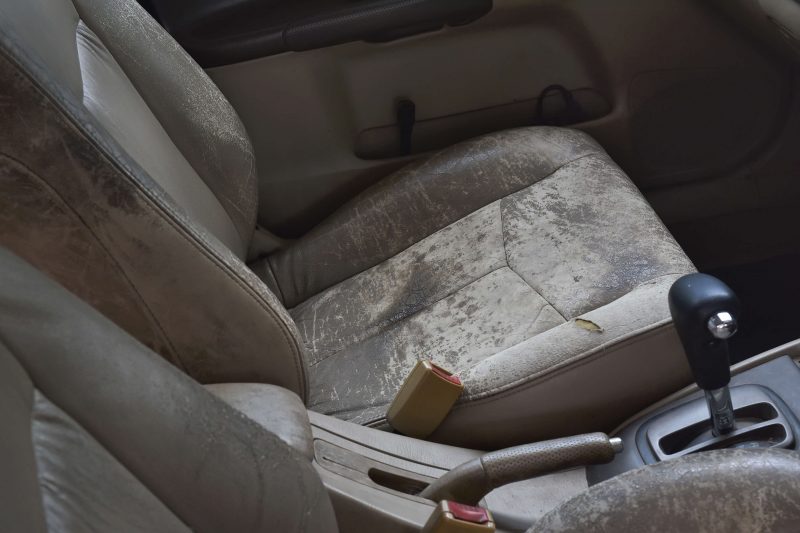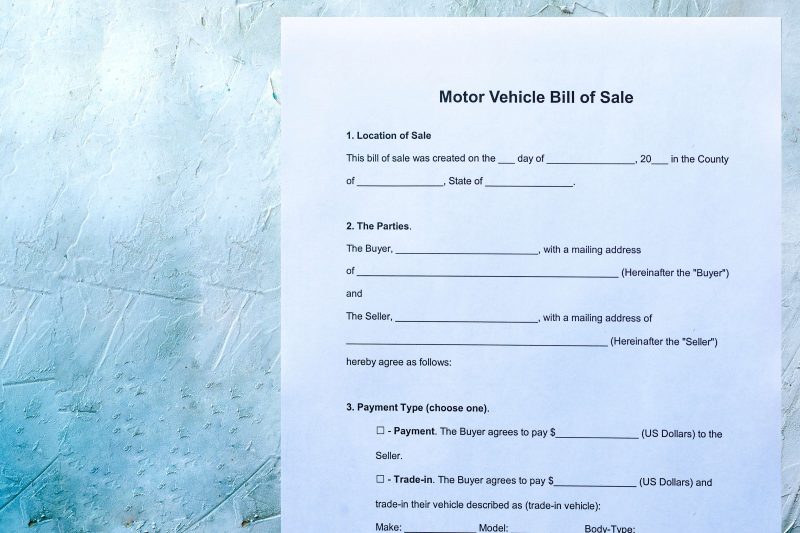Every once in a while, here at the eTags blog we like to get back to the basics. Sure, we like to keep up with trends and share the latest laws, but occasionally we think it’s important to revisit the sort of stuff that never (or seldom) changes. So today we are going to review a few key points to keep in mind when purchasing a vehicle person to person. By person to person, we mean not through a dealership – but perhaps from a neighbor, friend, family member, or even stranger.
Use eTags© to Quickly Complete Your DMV Service. Renewals, Title Transfers and More, All Online!
In other words, we’re about to supply you with a handy-dandy checklist to keep around and keep in mind if you’ve got a car, truck, SUV, or motorcycle you’re considering buying. Because everyone loves a good checklist, right?
Here’s what you want to remember when purchasing via private sale:
Checks on the vehicle itself.
- Does it run okay? Have you taken a test drive, noticed acceleration, used the brakes to ensure they were working properly. Are there any telltale signs that the car is in need of internal repair, such as odors, squeaking, loss of fluids, or excessive heat?
- How is the body of the vehicle? Is there any overt damage that needs to be addressed, such as major dents, broken head or taillights, loose side mirrors, or malfunctioning windows? Keep in mind that both automatic and manual windows should be inspected for smooth operation.
- Do the windshield wipers do their job? How about the windshield wiper fluid?
- Switch on the heating and air conditioning, check for temperature changes, and dust or odors that might be present.
- What is the state of the chairs, upholstery, dash, and console. Are they all in good condition without cracks, tears, or mechanical hinderances? If the steering wheel is covered, what shape is the cover in, and does it need replacing.

Many – actually, almost all – of these aspects you can examine yourself. It doesn’t take a mechanic to recognize problems like leaking anti-freeze (It smells like maple syrup) or a blinker that doesn’t blink. But it’s a good idea to bring the vehicle to a mechanic (or the mechanic to the vehicle, if you can swing that sort of boss move. A trained eye and a professional mind will catch many issues that the layperson may not recognize from a test drive or a casual inspection. So we do recommend getting the assistance of an automotive expert.
Once you are certain that the vehicle is fit to purchase, there are other requirements to consider. And we don’t want to toot our own horn, but this is where things get really good for us. After all, we’re about to get into our area of obsession. Oops, we mean expertise. Wink, wink!
Checks on the vehicle documentation.
- Does the car, truck, SUV, or motorcycle have its original certificate of title? If so, does the title bear the name and address of the individual (or pair) that is selling it? Is the document in clean condition? Meaning, is the title perfectly legible with all details clear and without bearing any cross-outs, corrections, or damaging stains?
- If the seller does not have a title, he/she/they will have to apply for a replacement/duplicate title before they are able to sell the vehicle. This is important, so we’re going to highlight it:

Do not ever pay for a vehicle without the presence of a clean, legal title! We can’t stress that enough. No title, no purchase. End of story.
- If the seller does have a title, but it is defaced in some way, they will also be required to obtain a duplicate/replacement document before moving forward with the sale.
- Once an official, clean certificate of title is present, be sure that the seller(s) sign over the vehicle to you in the designated areas. This is sometimes on the front of the title, but often found on the back side, depending on the state. In addition, in some states, the signing over of ownership must be done in the presence of a notary public. Check your local state laws to see if this applies to you.
- If you’ve got a clean title signed over to you, be sure to ask for a bill of sale. Many states will accept a bill of sale that is handwritten, but many DMV websites have forms to download and print for free if you want to make the receipt look and feel more official.

- A bill of sale should include the following information:
- Date of sale
- Make, model, year, color of vehicle
- First, last name of seller(s)
- First, last name of buyer(s)
- Purchase price
- Odometer reading – if you want to get fancy and thorough
- In some states (looking at you, California) you will need to ascertain whether the Smog Check status is current. If the seller has not kept up with this emissions requirement, you will have to update the vehicle’s clean status before being allowed to register it.
If all the above tasks and paperwork are in order, you are ready to get on with making the car/truck/SUV/motorcycle your own. So, on to registration!
It’s interesting to note that in most states you cannot transfer a license plate from one person to another.
 There are some exceptions that allow for family members to pass tags on to each other. Again, this is something to check with your local DMV. In general, you will need to either obtain new license plates, or transfer any valid, current plates already in your name.
There are some exceptions that allow for family members to pass tags on to each other. Again, this is something to check with your local DMV. In general, you will need to either obtain new license plates, or transfer any valid, current plates already in your name.
If you happen to live in one of the lucky states where eTags is already in operation, you can simply head over to our site and get started with registering your new buy. We can help transfer the title and get one in your name, and we can also facilitate with either moving your valid plates to the new ride or issuing a set of new tags. The process for all of this is super fast, and since it’s our thing, we also make it super easy for you. Because as always, here at eTags, we’re here to help!











